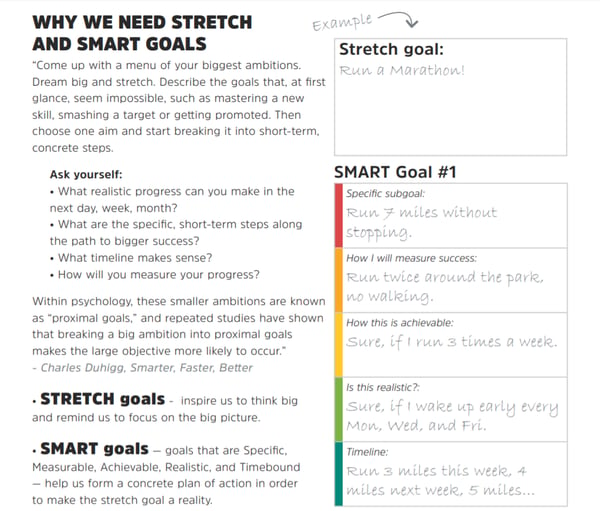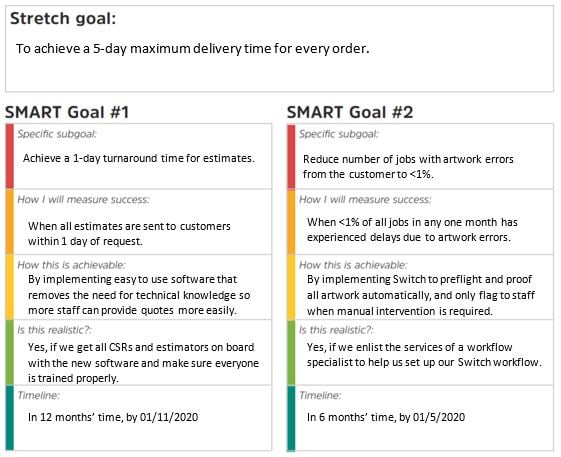A great way to stay focused on your implementation project and reduce stress levels is to set yourself both Stretch and Smart goals. This is something we work with all our customers to do when their project starts.
We’ve taken the concept of Stretch and Smart goals from a book called “Smarter, Faster, Better” by Charles Duhigg and it’s something that we’ve introduced here at Tharstern for our own team. You will, I’m sure, already know about SMART goals and why they’re useful for helping us to achieve objectives, but Duhigg explains in his book that they aren’t enough on their own. We also need to set ourselves big fat daydreaming goals too, otherwise we just end up ticking tasks off a list without any purpose behind it.

Why is it more effective to combine the two?
The author uses General Electric to illustrate the reasons why this approach works so well. In the 1940s GE had formulated a goal-setting system that would eventually become a model around the world. By the 1960s every GE employee had to write down their goals for the next year in a letter and send it to their manager, and this became a contract of sorts. By the mid-80s this system had developed into what we all know as SMART goals and their Chief Executive Jack Welch insisted that it was the widespread adoption of this system that led to the company’s stock tripling in an eight year period.
The problem with SMART goals
Not every division in General Electric benefited from this approach. There were two particular divisions – a nuclear equipment manufacturer in North Carolina and a jet engine plant in Massachusetts – that were not performing well. So GE sent in consultants to investigate and they discovered the problem was that their goals were too specific. To illustrate, an office assistant had SMART goals to order the office stationery e.g. ‘Place order by, request update on, receive deliver by December’. This obsession with trivial goals was evident throughout the poor performing plants, even with senior executives.
Stretch Goals
So General Electric introduced the concept of Stretch goals - an aim so ambitious that managers couldn’t describe (at least initially) how they would achieve it. GE didn’t develop this approach themselves, they took the advice of numerous academic studies that examined the impact of stretch goals, and found them to directly increase innovation and productivity. Duhigg’s book quotes a 1997 study of Motorola that describes how engineers developed new products ten times faster after the company introduced stretch goals to the business.
The power of combining SMART and Stretch
There is also a problem with Stretch goals when used in isolation – if a goal is too grand, it can have the opposite effect to what you were trying to create. A goal that seems unattainable will cause panic and crush morale. That’s why it’s important to pair them with something like the SMART system. Setting Stretch goals gives you something to aspire too, and using SMART goals gives you a way to break down that aspiration into smaller, achievable actions.
Using SMART and Stretch for an MIS Implementation Project
Your best place to start is with the vision that your project team has set for your MIS implementation. Take the main points of that vision and set them as Stretch goals, then create SMART goals to break down each one. Here’s some examples:

Once you've finalized your goals, you then need to:
- Remind your Project Team of these goals at every project meeting to keep everyone focused on what you're trying to achieve.
- Have the goals printed out and displayed in your project room.
- Break these goals down even further into smaller tasks and add them to your Kanban board to help you stay organized and on track.
Doing all this will help you dream big, and plan smart! 🤓